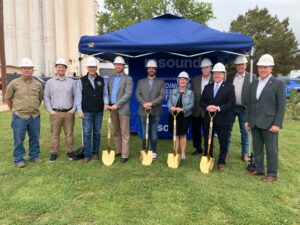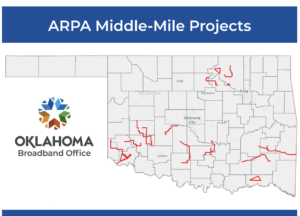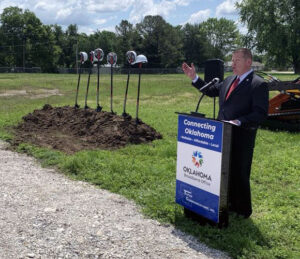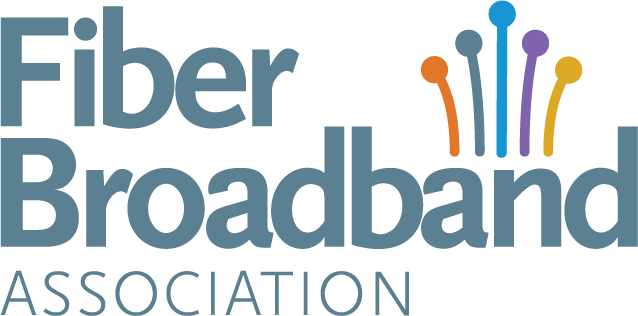Fiber Forward: Oklahoma’s Bold Path to Statewide Connectivity
Fiber Forward: Oklahoma’s Bold Path to Statewide Connectivity
In a candid and wide-ranging discussion, Oklahoma State Broadband  Executive Director Mike Sanders shared insights into his state’s ambitious broadband expansion goals, the challenges involved, and the strategic lessons drawn from his previous roles in state and federal government. Speaking with Gary, the webinar highlighted Oklahoma’s roadmap to achieving 95% fiber connectivity by 2028, leveraging federal funds and strong partnerships across sectors—including tribal governments, ISPs, and state lawmakers.
Executive Director Mike Sanders shared insights into his state’s ambitious broadband expansion goals, the challenges involved, and the strategic lessons drawn from his previous roles in state and federal government. Speaking with Gary, the webinar highlighted Oklahoma’s roadmap to achieving 95% fiber connectivity by 2028, leveraging federal funds and strong partnerships across sectors—including tribal governments, ISPs, and state lawmakers.
From Rural Roots to Policy Expertise
Sanders opened by acknowledging his deep connection to rural Oklahoma, which gives him firsthand understanding of the connectivity gaps that persist. Having served in both state government and at the federal level—including his work with the USDA—Sanders emphasized how his career trajectory uniquely positioned him to navigate the regulatory, financial, and logistical hurdles of broadband deployment. His time in Washington, D.C. provided a critical perspective on the national scope of broadband issues and equipped him to lead Oklahoma through the current transformation.
A Bold Target: 95% Fiber by 2028
Oklahoma’s legislature set a bold mandate: reach 95% broadband connectivity, primarily through fiber, before the Broadband Office sunsets in 2028. Sanders is confident this target is not only attainable but likely to be surpassed. However, he stresses that success hinges on coordi

nation across various federal programs. These include ARPA’s Capital Projects Fund, USDA ReConnect, NTIA Tribal Broadband funding, and FCC’s Enhanced ACAM program. The state has adopted a flexible, multi-pronged approach to funding and deployment, positioning itself to maximize every available dollar.
Sanders highlighted that Oklahoma has already deployed over $500 million in ARPA funds for last-mile projects—80% of which are fiber-based. While fiber remains the priority, Sanders emphasized the need to include fixed wireless, unlicensed wireless, and even low-Earth orbit (LEO) satellites in the overall strategy, especially in hard-to-reach areas.
Middle Mile Investment and Non-Deployment Funds
In a proactive move, Oklahoma recently announced over $53 million in middle-mile broadband investments across 19 locations, using reallocated ARPA funds. This reflects a broader strategy to strengthen broadband infrastructure while waiting for Broadband Equity, Access, and Deployment (BEAD) funds. Sanders supports expanding the definition of eligible broadband-related expenditures beyond last-mile deployment, such as workforce development and middle-mile infrastructure, especially given Oklahoma’s urgent need for network resiliency and workforce capacity.
Tribal Coordination and Inclusive Engagement
Oklahoma is home to 39 federally recognized tribes—more than most states—which makes tribal coordination an essential part of the broadband plan. Sanders described how the state established a dedicated tribal liaison and hosted numerous engagement events to include tribal perspectives in planning and application processes. This inclusive approach has already borne fruit: several tribal nations received grants in the latest middle-mile funding round.
Additionally, Sanders praised the federal government’s decision to waive matching fund requirements for tribal broadband projects, which removes a significant barrier for participation and accelerates deployment in tribal areas. He sees this collaboration as central to exceeding the state’s connectivity goals.
Weather Challenges and Resiliency Planning
Oklahoma’s extreme weather—including tornadoes, wildfires, and ice stor ms—significantly impacts infrastructure decisions. Sanders noted that burying fiber is the preferred method for ensuring long-term resiliency, despite its higher cost. The state’s focus on underground fiber protects infrastructure from wind damage, fire risk, and ice storms—an especially important consideration for rural areas where recovery times can be longer.
ms—significantly impacts infrastructure decisions. Sanders noted that burying fiber is the preferred method for ensuring long-term resiliency, despite its higher cost. The state’s focus on underground fiber protects infrastructure from wind damage, fire risk, and ice storms—an especially important consideration for rural areas where recovery times can be longer.
He acknowledged that while building underground fiber is costly, it’s ultimately a sound investment in the durability and reliability of Oklahoma’s communications network, with public safety as a key driver.
Navigating Federal Coordination and Policy Uncertainty
One of the most pressing challenges faced by state broadband offices is aligning local plans with evolving federal guidance. Sanders emphasized the importance of maintaining open lines of communication with Oklahoma’s congressional delegation, NTIA, and the Department of Commerce. He and his team actively advocate for flexibility in federal broadband rules, arguing that state leaders know their geographies, budgets, and communities best.
At the time of the webinar, Oklahoma was awaiting potential revisions to federal broadband guidance. Sanders urged that any pause in deployment planning should remain brief. A prolonged delay would slow shovel-ready projects and risk derailing construction timelines. Oklahoma, unlike some other states, has chosen to push forward with planning and project execution in anticipation of BEAD funding, rather than pause operations.
Final Thoughts: Coalition Building and Staying the Course
Throughout the conversation, Sanders underscored the importance of coalition building, clear communication, and local expertise. Whether working with ISPs, tribal nations, or federal agencies, he remains committed to a collaborative approach. He stressed that reaching—and exceeding—the 95% fiber goal will require full participation from all stakeholders and flexibility from federal partners.
In closing, Sanders reiterated his commitment to Oklahoma’s underserved and unserved communities. With time running short and demand for high-speed internet only increasing, he remains focused on pushing projects forward, staying transparent with stakeholders, and ensuring that rural Oklahomans are not left behind.
Click here to listen to the full episode or find previous episodes of Fiber for Breakfast.
Click here to view the slides presented during today’s episode.




